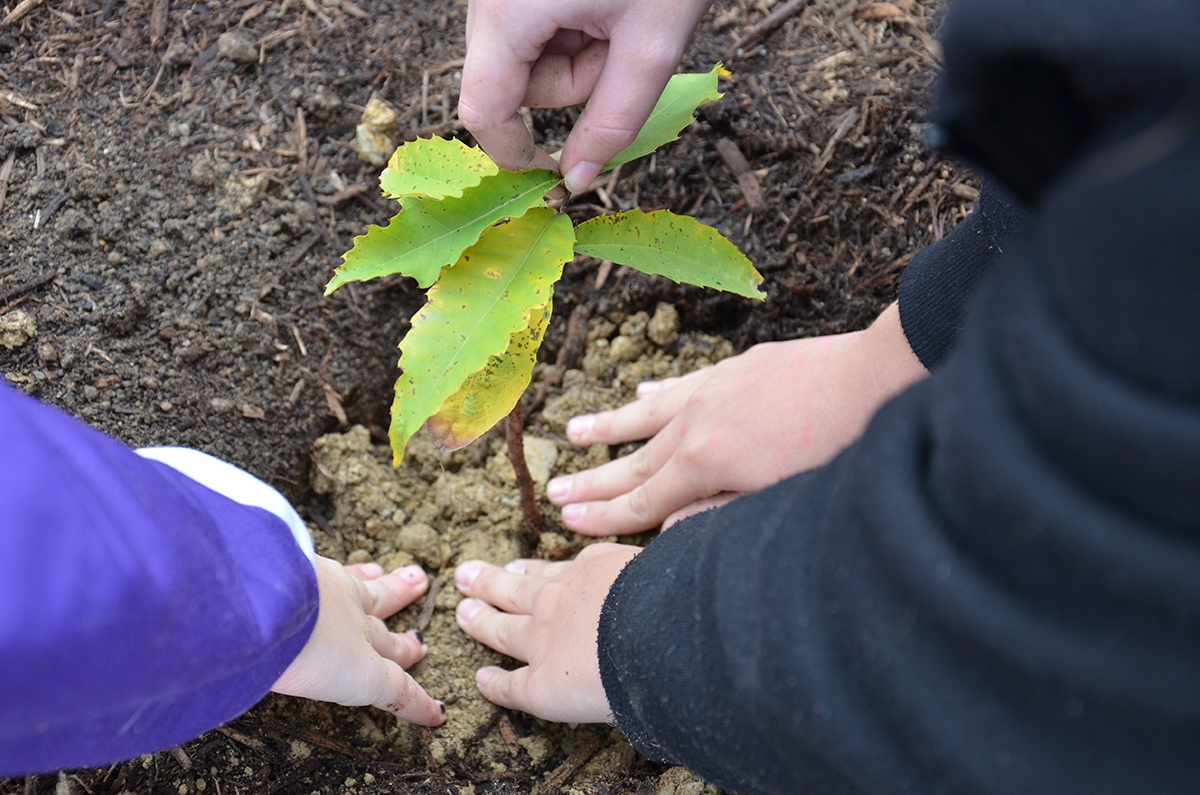Knauss legislative fellowships in Congress help build careers — and they're fun and educational. See our video and fact sheet for details.
6-12 American Chestnut Education

The American chestnut (Castanea dentata) offers a compelling story of how forests change and why some management is needed to maintain native forests.
Prior to 1900, American chestnuts and oaks predominated in over 200 million acres of forest from Maine to Florida and west to the Ohio Valley and were integral to everyday life in the United States. In 1904 the Blight was first discovered on the American chestnut at the Bronx Zoological Park. Within 60 years, having no resistance to the blight, an estimated 40 billion American chestnuts were wiped out.
The American chestnut is a key species for engaging students from middle to high school in hands-on scientific exploration, project-based learning, civic tree plantings, and environmental awareness.
For more information about the American Chestnut Education project please read the Project Introduction & the Carroll County Public Schools grades 6-12 spiral curriculum project
Project Partners
| MDSG | UME | CCPS |
| CBT | DNR | ACPS |
| FG | TACF | FSU |
American Chestnut Education
Biology
Editor: J. Adam Frederick and Jacqueline Takacs
School: Carroll County Public Schools, Maryland Sea Grant and University of Maryland Extension
Earth Science
Editor: J. Adam Frederick, and Jackie Takacs
School: Carroll County Public Schools, Maryland Sea Grant, and University of Maryland Extension





